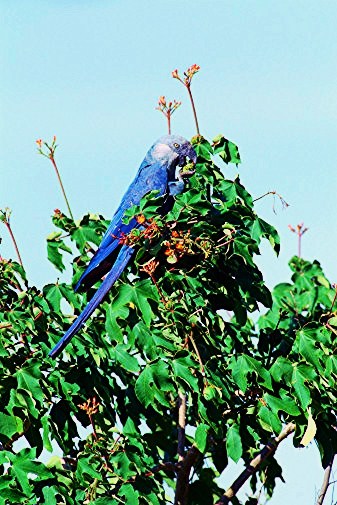Spix's macaw is the world's rarest bird, believed to have become extinct in the wild as of 2000. This elegant parrot has delicate blue-grey plumage, fading from the bright blue tail and wings to an ashy-blue crown. There is an area of featherless, dark grey skin around the eyes. Juveniles are typically dark blue in colour but the skin around the eye is pale. |

